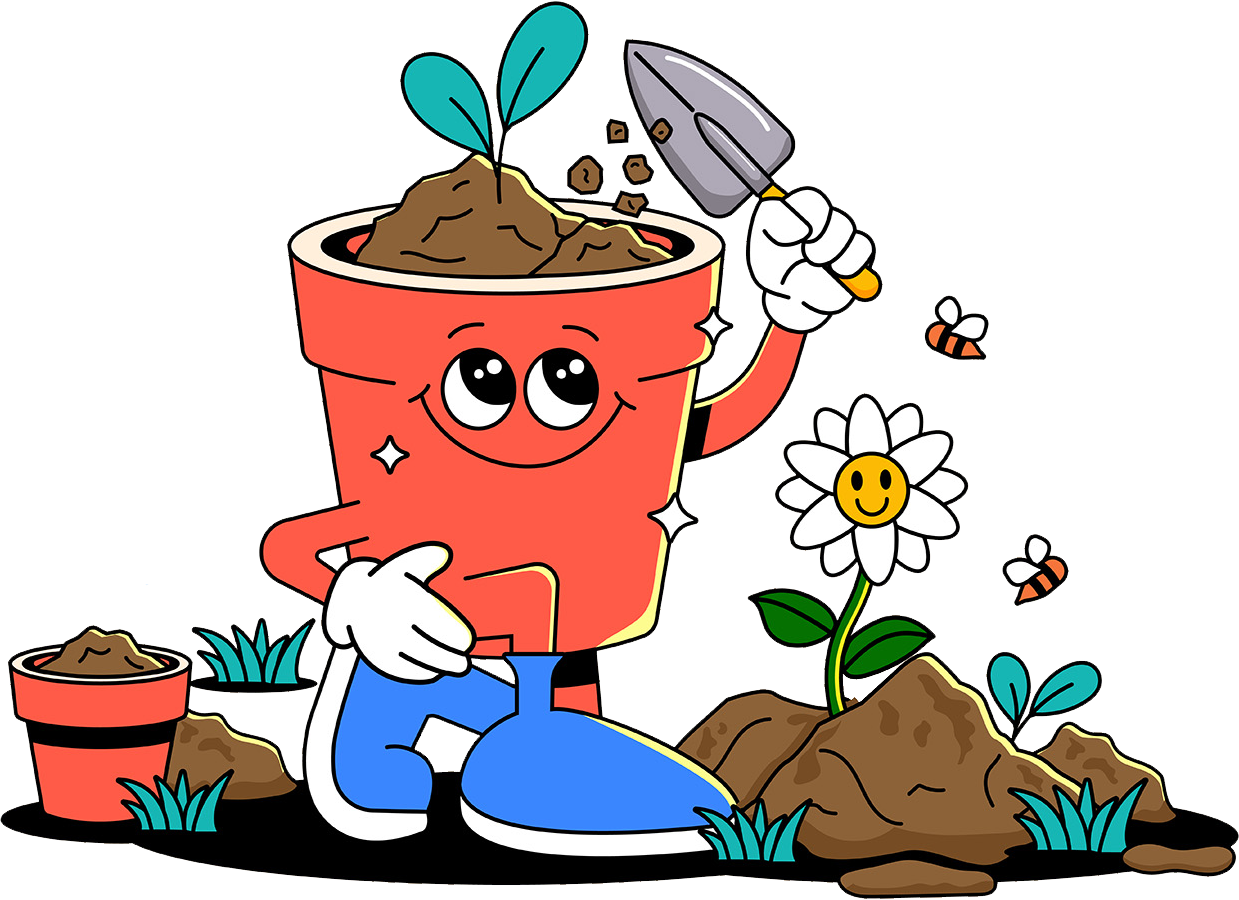INDIRECT SUN
Keep in bright, indirect light
☼ Avoid harsh sun ☼
Monstera can survive in low light, but it will not thrive. Low light = slower growth, fewer fenestrations (leaf holes), and leggy stems.
WATER WHEN DRY
Water when top inches of soil are dry
Give your monstera a thorough soak rather than small, frequent waterings. Water until it drains out, then let the soil dry before the next drink.
Monstera thrives in high humidity.
Consider using a humidifier to boost humidity levels around your monstera. A pebble tray can also help, but may not have the best results.
To mist or not to mist? Before you reach for the spray bottle, read The Misting Myth.
soil needs
Monstera deliciosa digs a chunky, well-draining mix that mimics its jungle roots: moist, but not too heavy.
When choosing a potting mix for monstera look for mixes that include:
ᯓ Perlite ᯓ
Improves drainage and prevents waterlogging.
ᯓ Orchid Bark ᯓ
Adds airflow and helps keep soil from getting too dense.
ᯓ Coco Coir ᯓ
Helps hold moisture without making the soil too wet.
Common Issues
-
A possible sign of overwatering. Soil that has been overwatered can lead to root rot.
Remove affected leaves. Cut back on waterings.
If issue persists or you suspect root rot: remove from pot, trim away dead, mushy roots, and repot in fresh soil.
-
Often due to low humidity, underwatering, or sun scorch.
Make sure to keep up with those humidity levels, check soil moisture and/or move your monstera away from direct sun.
-
Likely caused by underwatering or overwatering. A little tricky!
If soil is dry, make sure you are thoroughly watering the pot until it drains out.
If soil is drenched, drooping leaves could be a sign of root rot. In this case, dry out the soil for a day or two. Remove plant from pot, trim away dead, mushy roots, and repot in fresh soil.
-
A sign of not enough sunlight or your monstera has not reached maturity.
Move to a brighter spot and give it time.
-
Not always a cause for concern! Monstera can naturally develop aerial roots as it matures.
You can leave them be, provide a moss pole for support, or tuck them into the soil.
You can also trim them away without harming the plant by using clean scissors and cutting close to the stem.
Not Pet Safe
Monstera deliciosa can be toxic to pets if ingested. If you have pets, keep monstera plants out of their reach.









